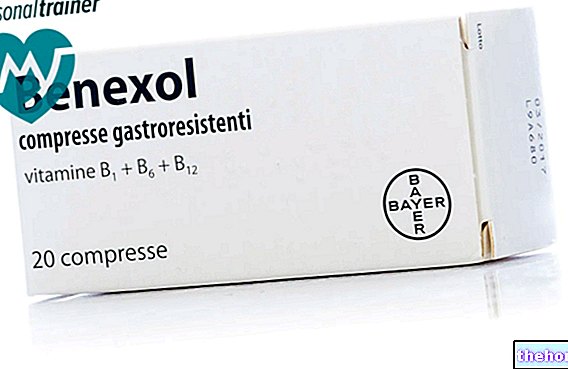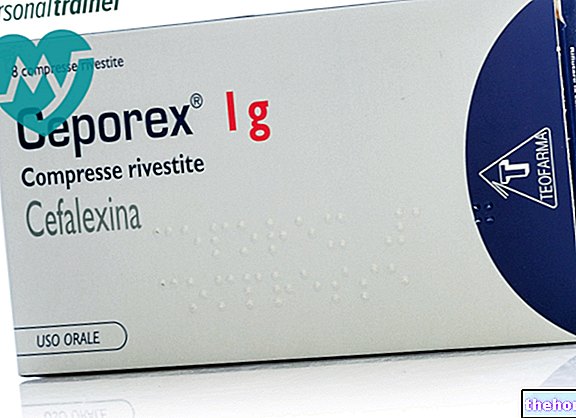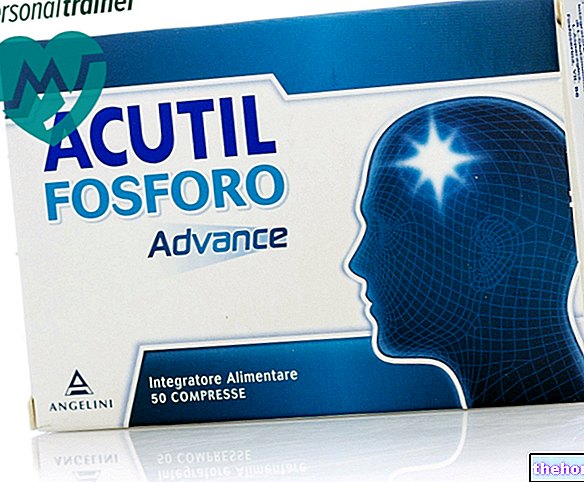Active ingredients: Pizotifen (pizotifen malate acid)
Sandomigran 0.5 mg coated tablets
Indications Why is Sandomigran used? What is it for?
Sandomigran contains the active substance pizotifen which belongs to a group of medicines called anti-migraine (migraine).
Sandomigran is indicated for the prevention of recurrent headaches caused by blood vessel problems such as:
- typical or atypical migraines (also referred to as recurrent migraines with or without aura)
- cluster headache
Sandomigran is not indicated for stopping pain during a migraine attack.
Contraindications When Sandomigran should not be used
Do not take Sandomigran
- if you are allergic to pizotifen or any of the other ingredients of this medicine (listed in section 6)
- if you are pregnant or breast-feeding (see section "Pregnancy and breast-feeding")
Sandomigran should not be given to children under 2 years of age.
Precautions for use What you need to know before taking Sandomigran
Talk to your doctor or pharmacist before taking Sandomigran.
Tell your doctor before taking Sandomigran:
- if you have liver problems or if you suspect you have them. Your doctor will have regular tests to evaluate your liver function
- if you have kidney problems
- if you have narrow-angle glaucoma that has not been treated surgically
- if you suffer from urinary retention eg. in case of prostatic hypertrophy
- if you have epilepsy
- if you are at risk of developing a disease called porphyria, for example if you have had this in the past with other medicines
Take special care and tell your doctor:
- if you experience signs of liver problems while being treated with Sandomigran. Your doctor will tell you to stop treatment until the cause of the liver problems has been determined
- if you notice any vision problems.
Withdrawal symptoms such as depression, tremors, nausea, anxiety, malaise, dizziness, sleep disturbances and weight loss have been reported following abrupt discontinuation of pizotifen (see section Possible side effects); A gradual discontinuation of treatment with Sandomigran is therefore recommended.
Children
Sandomigran should not be given to children under 2 years of age.
Interactions Which drugs or foods can modify the effect of Sandomigran
Tell your doctor or pharmacist if you are using, have recently used or might use any other medicines.
Tell your doctor if you are using:
- cisapride (medicine used in stomach problems)
- adrenergic blockers (medicines to treat high blood pressure)
- sedatives and hypnotics (medicines to reduce anxiety and promote sleep)
- antihistamines (medicines to treat allergies)
- monoamine oxidase inhibitors (medicines to treat depression).
Sandomigran with alcohol
Sandomigran increases the effects of alcohol, so do not take this medicine with alcohol.
Warnings It is important to know that:
Pregnancy and breastfeeding
If you are pregnant or breast-feeding, think you may be pregnant or are planning to have a baby, ask your doctor or pharmacist for advice before taking this medicine.
Pregnancy
If you are pregnant, the medicine will only be prescribed to you in cases of real need and under the direct supervision of your doctor.
Feeding time
Do not use Sandomigran while breastfeeding.
Driving and using machines
This medicine will affect your ability to drive and use machines as it can cause drowsiness, sedation and dizziness. Do not drive or operate machinery while being treated with Sandomigran.
Sandomigran contains lactose, sucrose and peanut oil
This medicinal product contains lactose and sucrose. If you have been told by your doctor that you have an intolerance to some sugars, contact your doctor before taking this medicinal product. This medicine contains peanut oil. Do not use it if you are allergic to peanuts or soy.
Dose, Method and Time of Administration How to use Sandomigran: Posology
Always take this medicine exactly as your doctor or pharmacist has told you. If in doubt, consult your doctor or pharmacist.
Adults
The recommended starting dose is 0.5 mg per day. Your doctor may gradually increase the dose.
The average maintenance dose is 1.5 mg per day, given in multiple doses during the day or once in the evening.
If Sandomigran has no effect at these doses, your doctor may gradually increase the dose to 3 - 4.5 mg per day in 3 divided doses.
Use in children over two years and adolescents
The recommended starting dose is 0.5 mg per day.
Your doctor may increase the dose to 1.5 mg to be taken in multiple doses during the day or once in the evening.
Sandomigran should not be given to children under 2 years of age.
Use in patients with severe kidney or liver problems (kidney or liver failure)
If you have liver or kidney failure, your doctor will take special care when prescribing Sandomigran and will decide which dose is best for you.
If you forget to take Sandomigran
Do not take a double dose to make up for a forgotten tablet.
If you stop using Sandomigran
Do not stop taking Sandomigran without first checking with your doctor.
However, gradual discontinuation of Sandomigran treatment is recommended as depression, tremor, nausea, anxiety, malaise, dizziness, sleep disturbances, weight loss and loss of consciousness have been reported after abrupt discontinuation of pizotifen (the active substance in Sandomigran). .
If you have any further questions on the use of this medicine, ask your doctor or pharmacist
Overdose What to do if you have taken too much Sandomigran
In case of accidental ingestion of an overdose of Sandomigran, notify your doctor immediately or go to the nearest hospital.
If you have taken too much Sandomigran you may experience drowsiness, nausea, vomiting, dry mouth, rapid heartbeat, fever, low blood pressure, difficulty in breathing, blue discoloration of the skin and mucous membranes, dizziness, confusion, loss of movement coordination, sedation, decreased central nervous system activity, arousal state (in children), decreased respiratory activity, convulsions (especially in children), coma.
In children, hallucinations, problems with coordination of movements, fixed and dilated pupils, flushing of the face and fever can occur, which can progress to coma and collapse of the heart and lungs.
Your doctor will treat the ingestion of an overdose of Sandomigran according to your condition.
Side Effects What are the side effects of Sandomigran
Like all medicines, this medicine can cause side effects, although not everybody gets them.
Very common side effects (may affect more than 1 in 10 people)
- increased appetite
- body weight gain
Common side effects (may affect up to 1 in 10 people)
- sedation (including sleepiness)
- dizziness
- nausea
- dry mouth
- fatigue
Uncommon side effects (may affect up to 1 in 100 people)
- constipation
Rare side effects (may affect up to 1 in 1,000 people)
- allergic reactions
- swelling of the face due to fluid accumulation (face edema)
- depression
- stimulation of the central nervous system (e.g. aggression, agitation)
- hallucinations
- anxiety
- tingling
- skin reactions: hives and skin rash (rash)
- muscle pain (myalgia)
Very rare side effects (may affect up to 1 in 10,000 people)
- convulsions
Undesirable effects with frequency not known (frequency cannot be estimated from the available data)
- increase in some liver enzymes which indicate liver problems
- yellowing of the skin, mucous membranes and eyes (jaundice)
- inflammation of the liver (hepatitis)
- muscle cramps
Withdrawal symptoms after abrupt discontinuation of pizotifen
Depression, tremor, nausea, anxiety, malaise, dizziness, sleep disturbances, weight loss and loss of consciousness have been reported following abrupt discontinuation of pizotifen.
Reporting of side effects
If you get any side effects, talk to your doctor or pharmacist. This includes any possible side effects not listed in this leaflet. You can also report side effects directly via the national reporting system at http://www.agenziafarmaco.gov.it/it/responsabili. By reporting side effects you can help provide more information on the safety of this medicine.
Expiry and Retention
This medicine does not require any special storage conditions.
Keep this medicine out of the sight and reach of children.
Do not use this medicine after the expiry date which is stated on the package after Expiry. The expiry date refers to the last day of that month.
Do not throw any medicines via wastewater or household waste. Ask your pharmacist how to throw away medicines you no longer use. This will help protect the environment.
Deadline "> Other information
What Sandomigran contains
- The active ingredient is pizotifen malate acid. Each coated tablet contains 0.73 mg of pizotifen malate acid (corresponding to 0.50 mg of pizotifen)
- The other ingredients are magnesium stearate, talc, povidone, maize starch, lactose monohydrate, titanium dioxide, hydrogenated peanut oil, colloidal anhydrous silica, macrogol 6000, sucrose, stearic acid, microcrystalline cellulose, cetyl alcohol.
Description of the appearance of Sandomigran and contents of the package
Each pack of Sandomigran 0.5 mg coated tablets contains 20 coated tablets.
Source Package Leaflet: AIFA (Italian Medicines Agency). Content published in January 2016. The information present may not be up-to-date.
To have access to the most up-to-date version, it is advisable to access the AIFA (Italian Medicines Agency) website. Disclaimer and useful information.
01.0 NAME OF THE MEDICINAL PRODUCT -
SANDOMIGRAN 0.5 MG COATED TABLETS
02.0 QUALITATIVE AND QUANTITATIVE COMPOSITION -
1 coated tablet contains:
Active principle:
Pizotifen malate acid ............................................... 0.730 mg
(equal to 0.50 mg of base).
Excipients with known effects : lactose monohydrate, hydrogenated peanut oil, sucrose.
For the full list of excipients see section 6.1.
03.0 PHARMACEUTICAL FORM -
Coated tablets.
04.0 CLINICAL INFORMATION -
04.1 Therapeutic indications -
Prophylactic treatment of recurrent vascular headaches, such as:
- Typical or atypical migraines
- Cluster headache
The International Classification of Headache Disorders 2nd Edition (ICHD-II) is a standard classification of headache used by physicians and describes the above disorders as follows: prophylactic treatment of recurrent migraine with or without aura and cluster headache.
Sandomigran is not indicated to stop the migraine attack in progress.
04.2 Posology and method of administration -
General population
Start with 0.5 mg per day; the dose can be progressively increased. The average maintenance dose is 1.5 mg per day in divided doses or as a single dose in the evening. In particularly resistant cases, the doctor can gradually reach dosages of up to 3 - 4.5 mg per day, divided into 3 doses.
Pediatric population (children and adolescents from 2 years on)
Start with 0.5 mg; the dose can be increased to 1.5 mg in divided doses or 1 mg as a single evening dose. Sandomigran should not be given to older children less than 2 years (see 4.3).
Special populations
Renal and hepatic insufficiency
Caution should be used in patients with renal and hepatic insufficiency and dose adjustment may be required (see section 5.2 Clinical pharmacology / Pharmacokinetics / Special populations).
04.3 Contraindications -
Hypersensitivity to the active substance or to any of the excipients listed in section 6.1. Sandomigran should not be given to older children less than 2 years.
Contraindicated in pregnancy and during lactation (see section 4.6).
04.4 Special warnings and appropriate precautions for use -
Liver damage has been reported, ranging from increased transaminase levels to severe hepatitis. Treatment with pizotifen should be discontinued if there is clinical evidence of hepatic dysfunction during treatment and until the cause of the liver abnormality is determined. Pizotifen should be used with caution in patients with known or suspected hepatic impairment who should undergo appropriate laboratory tests at regular intervals.
Pizotifen exerts a slight anticholinergic effect and therefore caution is warranted in the treatment of patients with untreated narrow-angle glaucoma or urinary retention (e.g. prostatic hypertrophy). Given the possibility of accommodation disturbances, it is recommended to pay attention to any alteration of vision.
In epileptic patients, undesirable effects such as convulsions were observed more frequently. Pizotifen should be used with caution in epileptic patients.
Pizotifen has porphyrinogenic potential and should be used with caution in vulnerable patients and only if safer alternatives are not available.
Withdrawal symptoms such as depression, tremors, nausea, anxiety, malaise, dizziness, sleep disturbances and weight loss have been reported after abrupt discontinuation of pizotifen (see section 4.8 Undesirable effects): a gradual discontinuation of treatment is therefore recommended.
Important information about some of the excipients
Pizotifen contains lactose. Patients with rare hereditary problems of galactose intolerance, the Lapp lactase deficiency, or glucose / galactose malabsorption should not take this medicine.
Pizotifen contains hydrogenated peanut oil. Refined peanut oil may contain peanut proteins. The monograph of the European Pharmacopoeia does not provide for an assay for residual proteins.
Pizotifen contains sucrose. Patients with rare hereditary problems of fructose intolerance, glucose-galactose malabsorption, or sucrase isomaltase insufficiency should not take this medicine.
04.5 Interactions with other medicinal products and other forms of interaction -
The following medicinal products may exhibit drug interactions when administered in combination with pizotifen.
Known interactions to be considered
Pizotifen is extensively metabolised in the liver, mainly by N-glucuronidation. An increase in the plasma concentration of pizotifen following concomitant administration of exclusively glucuronidated drugs cannot be excluded.
Cisapride
Concomitant administration of pizotifen with cisapride may lead to decreased efficacy of cisapride.
Adrenergic blockers
Pizotifen antagonizes the hypotensive effect of adrenergic blockers.
Central nervous system agents
Pizotifen can potentiate the central effects of sedatives, hypnotics, antihistamines (including some cold preparations) and alcohol.
The anticholinergic effects of pizotifen can be prolonged and enhanced by the concomitant intake of I-MAO.
04.6 Pregnancy and breastfeeding -
Pregnancy
Only limited data are available regarding the use of pizotifen in pregnancy; therefore it is advisable to prescribe Sandomigran in pregnancy only if clearly needed (see section 4.3).
Feeding time
Although pizotifen concentrations found in the milk of treated mothers are likely to have no effect on the neonate, the use of Sandomigran while breastfeeding is not recommended (see section 4.3).
Fertility
Studies in male and female rats, even at the highest evaluated doses, 30 mg / kg, did not identify any effect on fertility, litter size, survival rate, malformations or weight gain of the progeny.
04.7 Effects on ability to drive and use machines -
Machinery
Pizotifen has a major influence on the ability to drive or use machines.
Pizotifen can cause sedation, sleepiness and dizziness. Therefore, care must be taken when driving vehicles or operating machinery.
Patients treated with pizotifen with episodes of sedation and / or drowsiness should be sensitized to refrain from driving or attending to activities where impaired attention can put themselves or others at risk.
04.8 Undesirable effects -
Undesirable effects are listed according to frequency using the following convention: Very common (≥ 1/10); common (≥ 1/100,
The most frequent side effects are: stimulation of appetite, weight gain and sedation (including sleepiness and fatigue).
Table 1
Adverse drug reactions from post-marketing spontaneous reports
The following additional adverse reactions based on spontaneous post-marketing reports have been observed with pizotifen. Since these reactions were reported voluntarily from a population of uncertain size, it is not always possible to reliably estimate their frequency.
Hepatobiliary disorders
Increased liver enzymes, jaundice, hepatitis.
Musculoskeletal and connective tissue disorders
Muscle cramps.
Withdrawal symptoms
Withdrawal reactions have been observed after an abrupt discontinuation of pizotifen, therefore a gradual discontinuation of treatment is recommended (see section 4.4). Withdrawal symptoms can include: depression, tremor, nausea, anxiety, malaise, dizziness, sleep disturbances, weight loss, and loss of consciousness.
Reporting of suspected adverse reactions
Reporting of suspected adverse reactions occurring after authorization of the medicinal product is important as it allows continuous monitoring of the benefit / risk balance of the medicinal product. Healthcare professionals are asked to report any suspected adverse reactions via the national reporting system. "address www.agenziafarmaco.gov.it/it/responsabili.
04.9 Overdose -
Symptoms: drowsiness, nausea, vomiting, dry mouth, tachycardia, pyrexia, hypotension, dyspnoea, cyanosis, dizziness, confusion, ataxia, sedation, CNS depression, arousal state (in children), respiratory depression, convulsions (especially in children ), coma.
Intoxication from antihistamines can cause in children hallucinations, incoordination, presence of fixed and dilated pupils, redness of the face and fever, with possible evolution towards coma and cardiorespiratory collapse.
Treatment: administration of activated charcoal is recommended; gastric lavage can be useful only if the intake has been made for a very short time. If necessary, institute symptomatic treatment and monitor cardiovascular and respiratory symptoms. Benzodiazepines can be administered in excitatory states or in the presence of convulsions.
05.0 PHARMACOLOGICAL PROPERTIES -
05.1 "Pharmacodynamic properties -
Pharmacotherapeutic group: anti-migraine / other anti-migraine.
ATC code: N02C X01.
Pizotifen is characterized by a polyvalent inhibitory effect of biogenic amines, such as serotonin, histamine and tryptamine. It also possesses an antibradykinin and sedative effect and weak anticholinergic properties. Pizotifen is indicated for migraine prophylaxis by reducing the frequency of attacks.
Pizotifen also has appetite stimulating properties.
05.2 "Pharmacokinetic properties -
Absorption
After oral administration, the medicinal product is rapidly and almost completely absorbed from the gastrointestinal tract. The mean absolute bioavailability after oral administration is approximately 80%. Following a single oral administration of 2 mg of pizotifen the mean maximum plasma concentration (Cmax) of pizotifen and its metabolite measured together was approximately 5 ng / ml (Tmax 5.5 hr). Following repeated administration of 1 mg three times daily for six days, the mean maximum steady-state plasma concentration was observed 4 hours after dosing (Cmax, ss: 14 ng / ml) and the mean trough plasma concentration was approximately 11 ng / mL (Cmin, ss).
Distribution
Pizotifen is widely and rapidly distributed throughout the body with a mean volume of distribution of 833 L for the parent drug and 70 L for its N-glucuronide metabolite, respectively. Approximately 91% of the medicinal product is bound to plasma proteins. Distribution and elimination kinetics have generally been described as a bi-exponential decay function with a two-compartment model.
Metabolism
Pizotifen is extensively metabolised mainly by the liver by glucuronidation. The major metabolite is conjugated N-glucuronide which accounts for at least 50% of plasma exposure.
Elimination
About one third of the orally administered dose is excreted by the biliary tract. A significant fraction of the drug, corresponding to approximately 18% of the administered dose, is found in the faeces. The remaining fraction of the administered dose (approximately 55%) is mainly eliminated as metabolites in the urine. Less than 1% of the administered dose of pizotifen is excreted unchanged via the kidneys. Pizotifen and its major metabolite, conjugated N-glucuronide, are eliminated with a half-life of approximately 23 hours.
Special populations
Kidney failure
No specific pharmacokinetic studies have been conducted in patients with renal insufficiency. Since pizotifen is mainly eliminated in the form of metabolites in the urine, the possibility of an accumulation of inactive metabolites resulting from the accumulation of the parent medicinal product cannot be excluded.
In patients with renal insufficiency, caution should be used and dosage adjustment may be necessary.
Hepatic insufficiency
Although specific pharmacokinetic studies have not been conducted in patients with hepatic insufficiency, pizotifen is extensively metabolised by the liver and mainly eliminated as glucuronide in the urine. Use caution in patients with hepatic insufficiency, population where dose adjustment may be required.
05.3 Preclinical safety data -
Repeated dose toxicity
Repeated dose toxicity studies of up to 2 years duration were performed in rats and dogs. Target organs identified from histopathological findings were liver, kidney and sometimes thyroid in rats and liver, thyroid and spleen in dogs. The no observed effect level (NOEL) in both rats and dogs was 3 mg / kg which is 30 times the maximum recommended daily dose in humans.
Reproductive toxicity
Pytoziphene hydrogen malate has been evaluated for its effects on fertility and for its embryotoxic, foetotoxic, teratogenic and developmental toxic potential in several reproductive and developmental toxicity studies. No specific reproductive or developmental effects were observed in mice, rats or rabbits up to the highest tested doses of 30 mg / kg. This dosage is 300 times higher than the maximum recommended daily dose of 0.09 mg / kg for adults.
Mutagenicity
Mutagenicity tests carried out in vitro And in vivo showed no mutagenic potential of diseased pizotifen hydrogen.
Carcinogenicity
2-year toxicity studies in rats revealed no major lesions or masses attributable to the administration of pizotifen hydrogen malate at doses up to 27 mg / kg, a dose 300 times higher than the maximum recommended daily human dose (based on of mg / kg).
06.0 PHARMACEUTICAL INFORMATION -
06.1 Excipients -
Magnesium stearate; talc; povidone; cornstarch; lactose monohydrate; titanium dioxide; hydrogenated peanut oil; anhydrous colloidal silica; macrogol 6000; sucrose; stearic acid; microcrystalline cellulose; cetyl alcohol.
06.2 Incompatibility "-
None.
06.3 Period of validity "-
5 years.
06.4 Special precautions for storage -
This medicine does not require any special storage conditions.
06.5 Nature of the immediate packaging and contents of the package -
Blister containing 20 coated tablets.
06.6 Instructions for use and handling -
No special instructions.
07.0 HOLDER OF THE "MARKETING AUTHORIZATION" -
PHOENIX LABS- Suite 12, Bunkilla Place, Bracetown Buusiness Park, Clonee Co Meath, Ireland
08.0 MARKETING AUTHORIZATION NUMBER -
A.I.C. n. 022437014
09.0 DATE OF FIRST AUTHORIZATION OR RENEWAL OF THE AUTHORIZATION -
First authorization: 29.12.1971
Renewal: 01.06.2010




























